Hilinski's Hope: On Grief and a Family That Shows the Meaning of True Strength

The house where the Hilinskis have chosen to start over sits on the banks of Lake Murray in Irmo, S.C., past where their street dead ends, nearby a thicket of towering white oaks. The building’s insides have been gutted, same as the family that bought the place in January. They ripped up the floors and tore up the kitchen and stripped away everything but the foundation. Time for a complete rebuild, in both a practical sense and a symbolic one.
For now, the house is uninhabitable, except for one room that’s tucked upstairs and left untouched by the construction. It’s where Mark and Kym Hilinski run their foundation, Hilinski’s Hope. Where they raise both cash and mental health awareness. And where they remember Tyler, their middle son, one of three boys, all college quarterbacks, from a close, bonded, upper-class family. Tyler is the one who died by suicide two years ago next month.
This room is crammed with reminders of the life that Tyler lived. That’s him smiling at a pool in Mexico during a family vacation in 2018, him wearing No. 3 as Washington State fans carried him off the field on their shoulders following a comeback win the previous fall, him sitting atop a brick wall in Greece earlier in college, staring down at the ocean, his whole life spread before him.
I’m standing next to Kym in that room on World Mental Health Day in October. We had driven to the lake house from the family’s temporary quarters, two apartments in the same complex located between Irmo and Columbia, where their youngest son, Ryan, is a freshman quarterback at South Carolina. He wears No. 3 in Tyler’s honor. He lives with his older brother, Kelly, who had planned to do the same for Tyler, the middle child of the three Hilinski boys. Kelly had decided to help Tyler manage his schedule, maximize his gifts on college football fields, maybe play in the NFL.
So here they are, rebuilding their new life around the room that reminds them of who and what they lost—and rebuilding their day-to-day existence around who and what they still have. There are three perspectives here, all haunted by Tyler’s absence, all centered around Ryan as he plays the role that had been created for the brother that he lost. Those perspectives are all complicated, because so many of their efforts can feel futile, in part because they rarely see the impact that they’ve made on hundreds, if not thousands, of lives. Like mine.
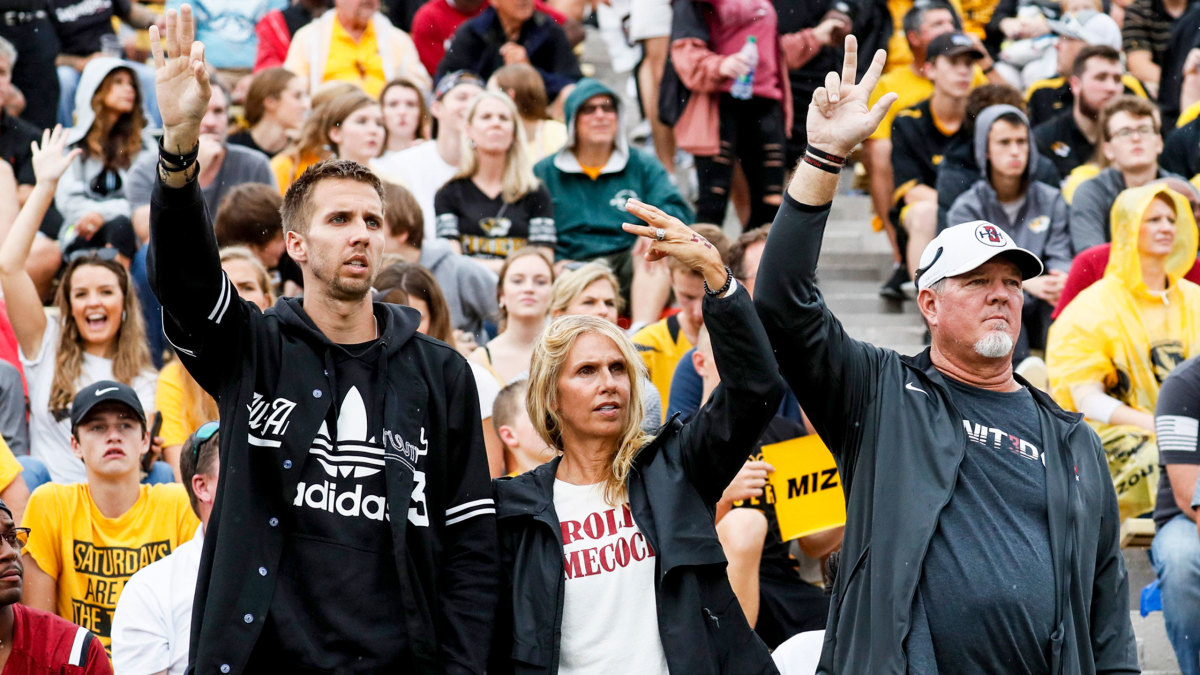
**** BROTHER ****
The longer that Kelly and Ryan live together, the more they feel like an old married couple. This fall, Kelly woke up early every morning to prepare for the MCATS. He’s studying to be a doctor and had shifted his focus to neurology after Tyler’s death. He’d wake Ryan up at 6:30, remind him to eat breakfast and grab his homework and send him off to the Gamecocks football complex, with their mom behind the wheel. “He’s still the baby,” Kelly says.
For months after Tyler died, Kelly and Ryan slept in the same bed every night. Now, Ryan usually camps out on the queen-sized mattress that dominates Kelly’s living room. Kelly helps Ryan write his English papers, correcting one on Sun Tzu and the Hippocratic Oath and red-penciling another about Avicenna’s Canon of Medicine. He’ll bring Ryan snacks after classes, or fetch what his brother forgets for road trips, transporting training shoes or dress socks or travel suits down to the team bus. Kelly will play video games with Ryan, or laugh at YouTube videos, seeking normalcy. And he’s in charge of snacks for a 19-year-old palate, which means Oreos and Chips Ahoy cookies and Pop Tarts. Lots and lots of Pop Tarts.
The other day Ryan returned home and found the pantry empty. “You didn’t go to the store today, I see,” he said.
“Excuse me,” Kelly responded, laughing. “I’m working on it!”
Amid the routine, they can almost forget. Almost. They haven’t felt “normal” since before Jan. 16, 2018, when Tyler climbed inside a closet in his old apartment near Washington State’s campus and fired a bullet from an AR-15 assault rifle through his left eye. Kelly and Ryan have checked out movies like The Joker and eaten fried everything at the state fair and made sure that Ryan optimized every snap he’s taken. But they’ll always know that Kelly was supposed to live this life, to do these things, with Tyler before Ryan. “We’re diving into this every second of every day, because we can’t bear the thought of sitting in silence,” Kelly says. “At the same time, we’re rooting with all our soul for that little s---"—meaning Ryan—“because he deserves it; he deserves it so much.”
I’m riding shotgun in his truck, as Kelly runs errands around Columbia, reminiscing about the first few weeks of an unexpectedly eventful football season. Ryan had won the backup job in spring practice, then watched Jake Bentley start the opener, only to suffer a season-ending injury to his left foot. Ryan found out from his coaches, Will Muschamp (head) and Dan Werner (quarterbacks), who summoned him to Muschamp’s office. “He had already won over our football team,” Muschamp says. Ryan listened to the men, bumped fists with both, shouted “Let’s go!” and walked off. He sent a group text message to his family. “Guess what?” it read. “You’re talking to the new starting quarterback at South Carolina.” As Mark relays the story, he says “Washington Sta-- …” for the school and then corrects himself, underscoring how Tyler remains at the forefront of even his unconscious mind.
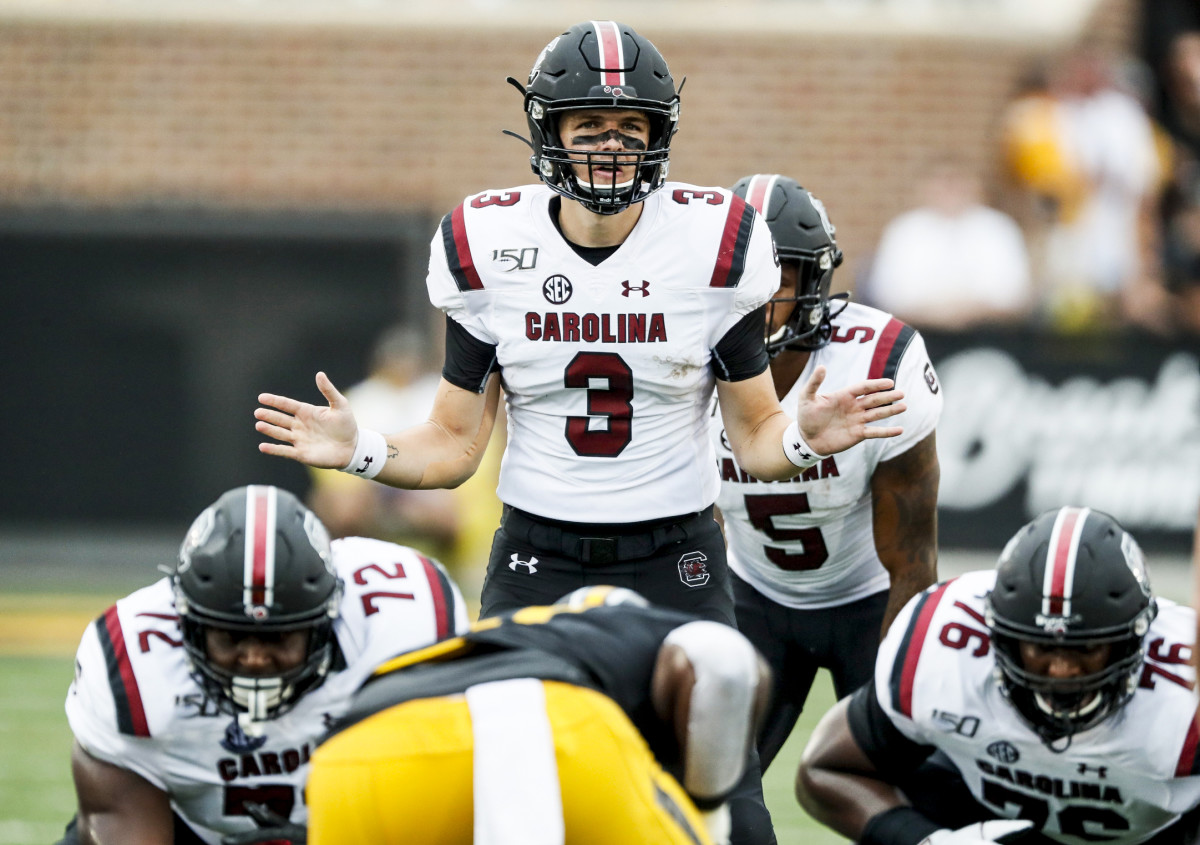
Ryan called his dad that same day, wondering how he would earn his teammates’ trust. He carries himself with an easy maturity that can hide the fact he’s still just a kid—and one who has lived through the worst possible thing and still fought to realize his dream. His father reassured him, even when he couldn’t reassure himself. He told Ryan his teammates had already watched closely as he practiced and lifted and prepared. He then kept an eye on his youngest, seeing how Ryan led, watching teammates respond the way everyone had hoped. Indeed, they followed his son, through great games (Charleston Southern, 282 passing yards, Week 2; seismic upset, then-No. 3 Georgia, Week 7), expected losses to ranked teams (Alabama, Florida, Texas A&M, Clemson) and more unexpected ones (Missouri, Tennessee, Appalachian State). He continued to endear himself. “Tyler was a lot like that,” Kelly says.
The Gamecocks would finish 4–8. But Ryan would start 11 times, complete nearly 60% of his passes and throw for 2,357 yards in his true freshman season, despite confronting one of the nation’s most difficult schedules, the docket loaded with SEC opponents. Over and over, he’d tell Kelly over Pop Tarts, “This doesn’t seem real; this doesn’t seem real.”
Tyler used to say that, too, and that’s the hard part in this new world, separating what Tyler did and what Ryan will do, what Tyler wanted and what Ryan wants. Allowing Ryan to carve out his own career, play football despite his family’s deepest fears, assuming the same risk as his brother, free from concerns over head injuries or CTE, two potential factors in Tyler’s suicide. “Particularly at home games, when I watch him run out of the tunnel, so smiling and happy, it reminds me so much of Ty,” Kelly says.
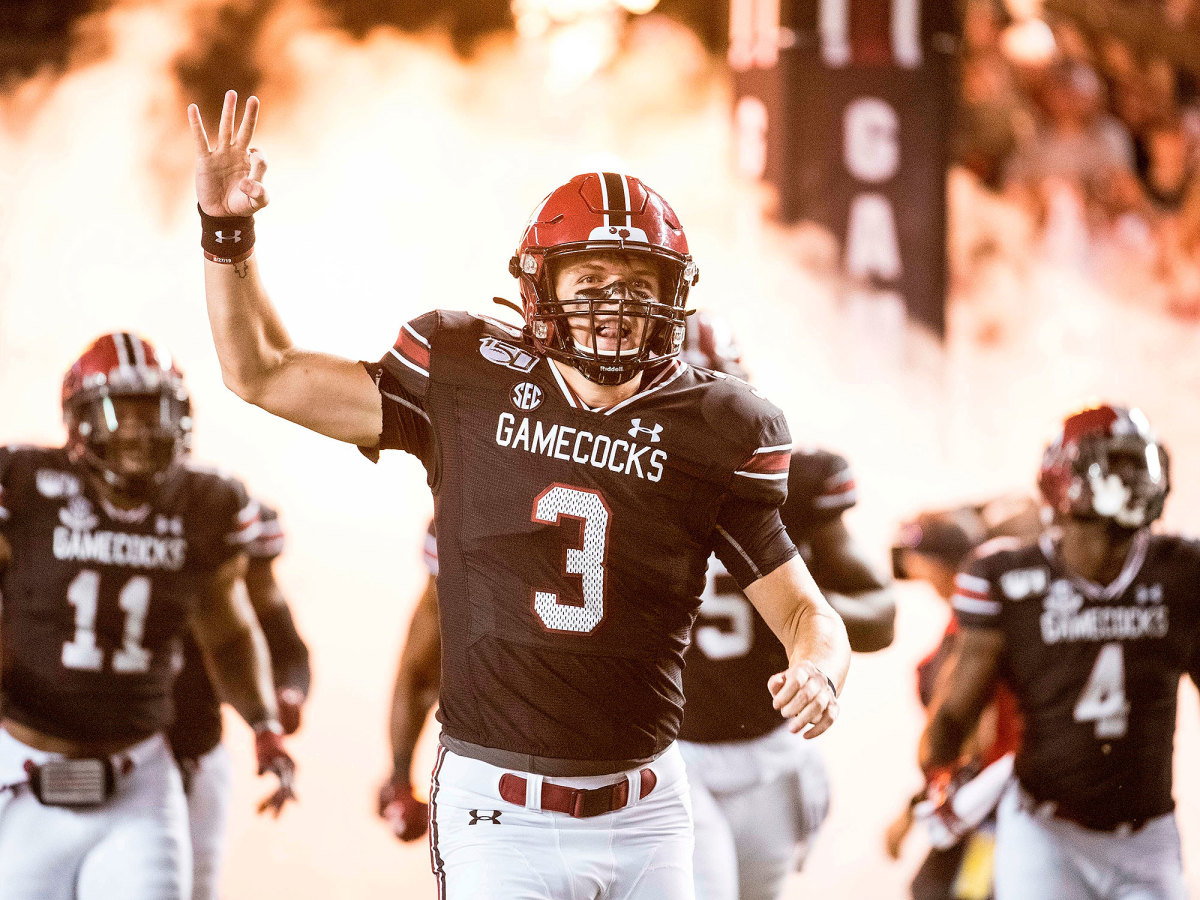
**** MOM ****
Shortly after their son died, the Hilinski parents took Ryan, then a high school senior, on a road trip. They stopped at SEC schools up and down the east coast, meeting with coaches and officials and eating at Ryan’s favorite fast food joint, Bojangles. Kym realized a few things early into their journey. The first is that she wanted them to be together, that they had to follow Ryan to wherever he ended up. The second is that college athletic programs across the country needed to hear both their story and their message, that there were lives they could change and athletes they could save.
On that same trip, they found out that Tyler did have CTE, the degenerative brain disease believed to be caused by repetitive blows to the head. They found out from the Mayo Clinic, the group that had examined Tyler’s brain. Despite that news, the Hilinskis did not blame football, even if Kym would prefer that her youngest retire early, that he take up anything else, that he not play in the country’s toughest conference for a rebuilding program, because at least he’d be less likely to subject himself to the worst kinds of hits. She cried before the opener and studied her feet as games unfolded, unable to watch SEC defenders chase and tackle and smother one of the two sons she has left. Outside of games, she cried so much, so often, that she would walk outside the apartments so that Ryan couldn’t see her. So he wouldn’t know the depth of the pain she felt.
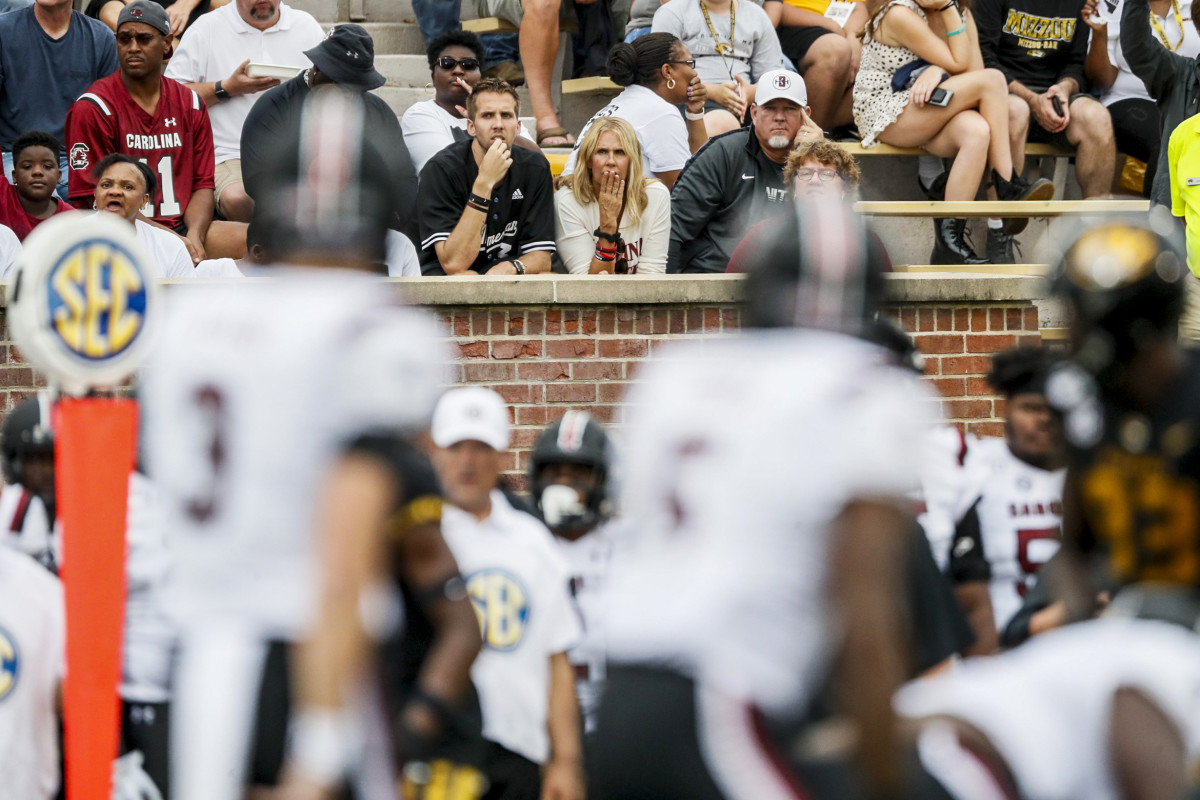
Before his first start, in Week 2, she met Ryan on the Gamecock Walk, where the South Carolina players stroll together into the stadium, right past their adoring fans. She grabbed Ryan and held on for five seconds, then something more like 10. “I didn’t realize I hugged him that long until I saw the video,” she says. “I just didn’t want to let go. When they’re in your arms, you feel like you’re protecting them. As soon as you walk away …” She trailed off.
Like Kelly, Kym wants to stay busy. She sends thank you notes to every person who donates to the foundation, many in $3 increments that now total over $500,000 raised. She writes notes and replies to emails and studies old pictures of Tyler, looking for signs of rage or angst. She does all that when she can’t sleep and when she can. She doesn’t like to nod off, if she can help it, because sometimes she dreams about her boy lying in that closet.
The work sustains her, as much as anything possibly can. With Mark, she speaks to schools, athletic departments and organizations—any group that deals with young athletes who are taught to project invincibility and yet deal with at least as much and perhaps more stress, pressure and expectations than their peers. The Hilinskis have created a “playbook” that they can hand out at schools, based on what they’ve learned from mental health experts and their own research. They have partnered with a public relations firm (DKC), a senior consultant who also works with Lady Gaga (Dave Smith of X Sector Labs), a prevention strategies specialist (Dr. David Wyrick, UNC Greensboro), the NCAA and two other mental health programs (Step Up! and Behind Happy Faces).
They met with 400 staff members and athletes at Ole Miss and spoke to thousands more at Stony Brook, UCLA, Tulane, Texas, USC and California Irvine. Told them that the NCAA doesn’t require that universities employ a certified mental health professional. Reminded them that Washington State had one half-time employee to assist hundreds of athletes with their mental health when Tyler died. The Hilinskis want to put a face on mental illness. There are stigmas to shatter, honest conversations to be had. Evaluations that should take place in the same way that schools approach rehabilitation for physical injuries. They want major college programs to view their approach to mental health as a competitive advantage, the same as the palatial facilities they build, only more important. After the Hilinskis met with the softball team at Ole Miss, its sports performance psychologist, Dr. Josie Nicholson, saw the players huddle together, near home plate. “We have to take care of each other,” one said, which was exactly the point.
Sometimes, Kym views the work as valuable; she can see the conversation around mental health changing in college sports. Not long after I met the family in 2018, I began to wear three Hilinski’s Hope bands every day on my right wrist, and I hand them out to anyone who asks what they signify. Those are tiny victories. But there are big ones, too. The foundation started urging crowds at all of Ryan’s games to throw up three fingers at the start of the third quarter of every game. The fans for every away opponent have taken part. For the home game against Alabama, the Hilinskis sat near the Crimson Tide’s bench. There was Nick Saban with three fingers held high, the same as Tyler’s jersey number, acknowledging their efforts.
Sometimes, when she wonders if all this is worth it, Kym can feel Tyler all around her, telling her it is. When she flies, she looks out at the clouds and can feel her boy’s presence. When she stops by the family’s dock, she can sense him floating up above. She thinks he supported her after surgery earlier this year, when she fell off one of those motorized scooters and broke her pelvis in two places. She’s not sure, and yet she remains certain. He’s there, watching as she finally allows herself to sing in the car, or get her hair done, or plan a February vacation she says she can’t look forward to. I ask why she must push forward, why their work can at once mean so little and yet so much. “I just try to wake up every morning and put a little bit of good out into the world and honor Tyler while I do it,” she says. “That’s all I can do. So I must.”
That’s her new reality—one made easier by her youngest, by the calm that he exudes. She watched Ryan speak to a fraternity where one member had died by suicide. She saw him tell his story, their story, over and over again with uncommon poise and grace. He started going back to mass, when the rest of his family could not step back inside a church. “Usually, the youngest ones are sort of taken care of,” Kym says. “But it feels like Ryan is now trying to take care of all of us, too. I would say he gives us hope.”
After one particularly bad loss, to Missouri in late September, the local newspaper, The State, ran the worst possible headline. It read: Hilinski’s Hope Sinks. The newspaper would apologize and say it hadn’t meant to offend the foundation or diminish its mission. Regardless, Ryan comforted his parents when they found out, not the other way around. And the very next game, against Kentucky, the same fraternity brothers he had spoken to showed up, with their chests painted. Their bodies spelled out: Hope Never Sinks.
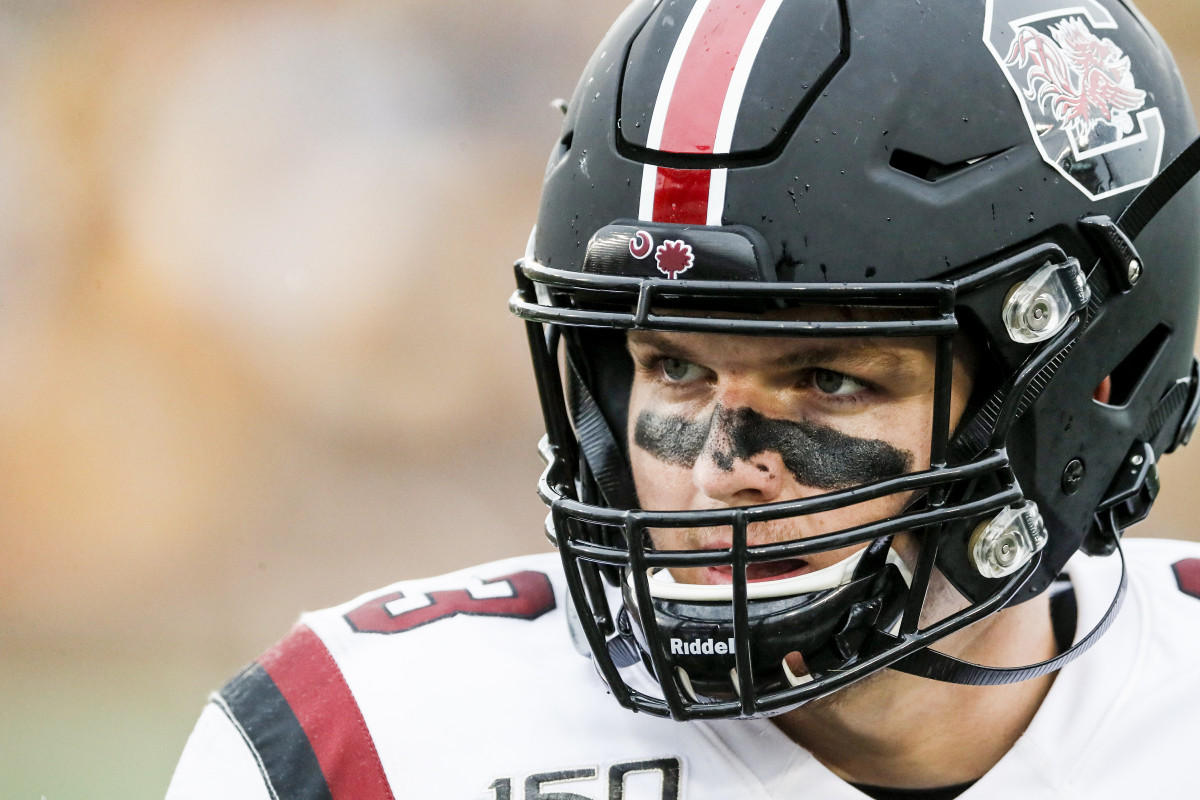
**** DAD ****
I met Mark for brunch on the same trip to South Carolina back in October. I had landed in Atlanta off a red-eye, and he was headed to Athens, Ga., to visit family members who had flown in early for the Georgia game. Since our driving routes would cross, we decided to meet in the middle and Mark just happened to pick a restaurant with the same initials as his foundation (Huddle House) off an Interstate-20 exit (33) that gave me chills.
Over eggs, biscuits and glorious gravy, we spent almost an hour discussing what Mark had found on Tyler’s cell phone. Initially, they thought he’d destroyed the device, or left it somewhere that it would never be found. Instead, the students who moved into that old apartment had discovered the phone in one of the heating vents. Mark hired a company to hack into the device and create a searchable spreadsheet for 60 gigabytes of data. Then he’d spent night after night combing through the file, looking for the answer that he wanted most. Why?
That question had dogged Mark ever since I first contacted him a month or so after Tyler’s suicide, wanting to tell the family’s story. It’s always hard to send an email like the one I shipped him and not feel like an insensitive ambulance chaser, apologizing for intruding on his grief, explaining the kind of work I do and how I’d like feature his family, delicately, sensitively, if he was open to it. He trusted me to do that, along with Mary Agnant, the video producer who I met for the first time in the Hilinski’s driveway in Southern California. We ended up writing a story and making a documentary, Losing Tyler. Both ran in June that year. But my relationship with the Hilinskis never ended, the way that tends to happen once a story like it spreads out into the world. They checked in regularly on my family, asked for pictures of my 2-year-old son Blake and visited with us whenever they came to Seattle, where I live.
Tyler’s lost phone always came up. Before they found it. Before they hacked it. Before they scoured it. But even the extensive search yielded no answers. Not the ones they wanted, anyway. Some of what they found only made them feel worse. Like when Mark discovered Tyler’s final Internet searches were things like “how to load an AR-15” and “is an AR-15 really fatal?” and “how can you be sure an AR-15 is really fatal?” Tyler had told his family not to read any negative press, but in the weeks before he died, his text messages and search history revealed he had done just that. Mark spent a long time trying to make sense of the main phone password that Tyler had changed in the weeks leading up to his death by suicide, the one that granted him access to his apps from the lock screen. The only combination of numbers that made sense when converted into letters was s-o-r-r-y-y with an extra “y.” Which just marked another answer other than the ones Mark wanted.
While searching through the spreadsheet, the one thing that made Mark feel better was seeing how close Tyler and Ryan had become. He knew that they loved each other, but he didn’t know the full extent of their relationship. It went deep. They communicated all day long. Eventually, Mark stopped looking, stopped searching. He came to realize he’d never find what he most wanted.
He glanced up at me that morning. His gaze had been somewhere else, far off in the distance, his eyes vacant as he recapped the futile searches. He started to tell me an analogy, about how surgery works in college sports. There’s the evaluation, then the basic tests, like for blood pressure and weight and temperature, then the diagnostic exams like X-rays or MRIs. The surgery is the last part of that chain, and he saw the work they’re doing at Hilinski’s Hope as the same, only for mental health, and they want to outline every step up until the “surgery.” Then, abruptly, he stopped. He admitted to falling apart that very morning, folding clothes, overcome with emotion that forced him to sit down. “It hits you all at once,” he says. “Like, what the f--- are we doing here? Where’s Tyler? What happened? It sneaks up on you. It never goes away.”
“This is all so f------ stupid,” he says, and I know exactly what he means. The athletic departments changed, the stigmas confronted, the lives saved—all of that comes with the same, impenetrable baseline. That Tyler is still dead. That nothing will bring him back. That Mark will never feel whole again. I’m holding back the tears. “People mean well and we love it,” Mark says. “But Tyler didn’t jump on a grenade. He didn’t save a bunch of guys in a foxhole. My money is on he didn’t know what he was doing. So when people say he’s saving a bunch of lives, that’s way down on the list as the second-best option.”
Kym thinks her husband’s analogy is wrong. She thinks her boy did step on a grenade, that his actions, hard as they are to understand, did save lives. But she understands the sentiment. She knows what cannot be reconciled. “It’s absolutely just impossible to separate why it’s being done and how cool it is that it’s being done, for me at least,” her husband says. “It’s just a f------ joke. Sadly, it’s like why are we doing this? Oh, that’s right, because my kid shot himself in the head.”
I don’t know what to say as Mark and I wrap up. I want to tell him about the baby my wife and I lost when she miscarried in September and how I’ve obsessed for months over whether we’ll be able to give Blake a sibling, a best friend, a partner for his life. I want that as much as I want anything. I want Blake to know his brother or sister the way that Kelly knows Ryan, the way they both knew Tyler. I want him to do something like delay becoming a doctor, the way that Kelly has, because his sibling’s needs are more important. What sacrifice.
I want to tell Mark about the debilitating migraines I’ve been experiencing throughout the fall, the kind that lead me to dark places, that force me into dark rooms, where my vision blurs and I can’t see what’s right in front of my face. They’re not going away, and I worry now that I will live in fear of these headaches for the rest of my life, not to mention suffer from them.
I don’t yet know that 40 of my friends will be fired this fall, including Mary, who receives a text from Kym expressing her deep remorse and gratitude. It’s unbelievable, that kind of fortitude. I don’t yet know that in the same two weeks around Thanksgiving, one of my friends will be badly injured in a scooter accident, others will succumb to drug and alcohol addictions and yet another will find his 25-year-old son dead from an illness. I will attend the 25th funeral of my life. I’ve put too many damn people in the ground, posted too many RIP tweets. I will lose four more people this year, all older writers who made a difference in my life, who I loved.
I leave out the dream that I keep having. In it, I’m sprinting as fast as I can, but there’s a tidal wave resting like two inches above the back of my head. No matter how far I run, or how hard, the wave just sits there, ready to crash into my skull. I don’t tell Mark that, though. I give him a hug and say thank you and he looks back at me like, for what?
Well, for everything. For telling me to stay home when I was supposed to visit them the week after my wife miscarried. For checking in on me throughout the fall. For showing me that sometimes the stories we tell are more than stories. Point is, everybody carries something into their day and some burdens are heavier than others, but we all need reasons to move forward. I’ve come to know what depression feels like when it sinks into you, how quickly life can unravel, despite carefully laid out plans. Thank God I’ve got my little guy and thank God I’ve got the Hilinskis, this family that stared down something so much worse than anything I’ve ever lived through and found a way to show us all what true strength really looks like. It’s messy and complicated, vulnerable and human, and there’s one word that best covers what this family has projected to the world, even when they don’t, or can’t, feel it themselves. It’s Hope.
